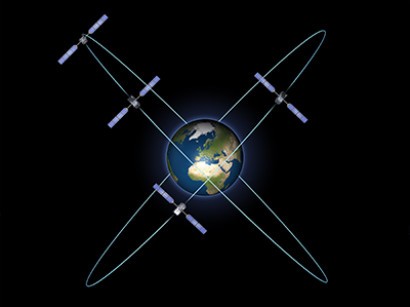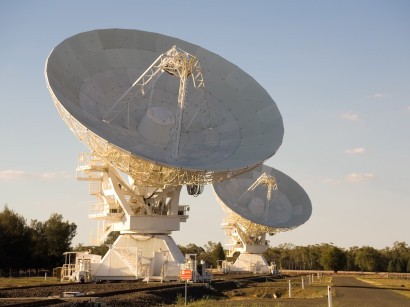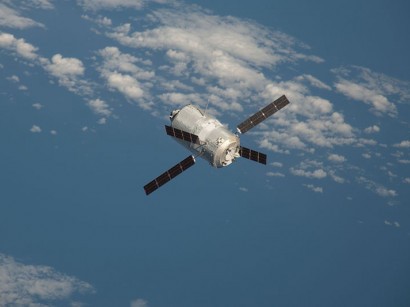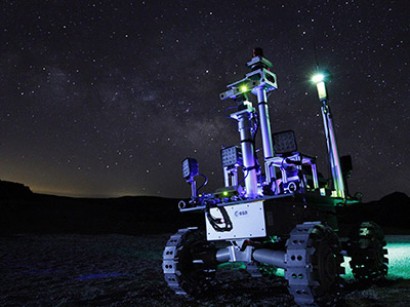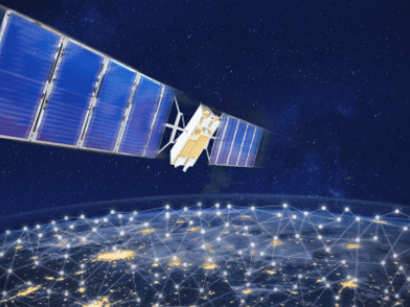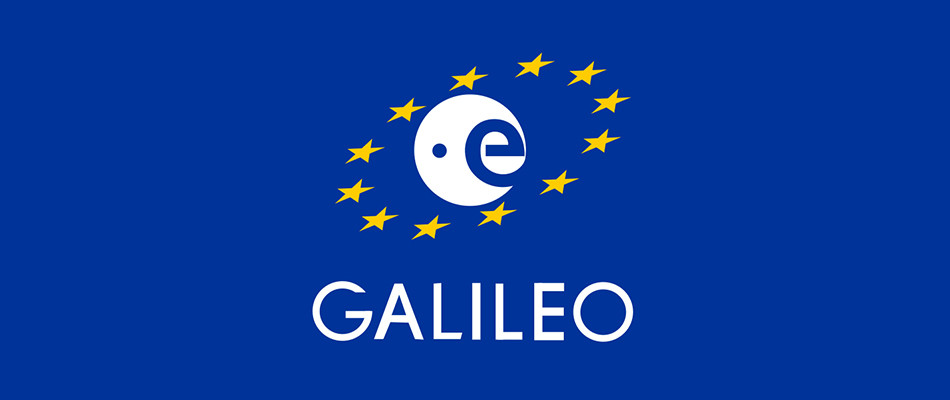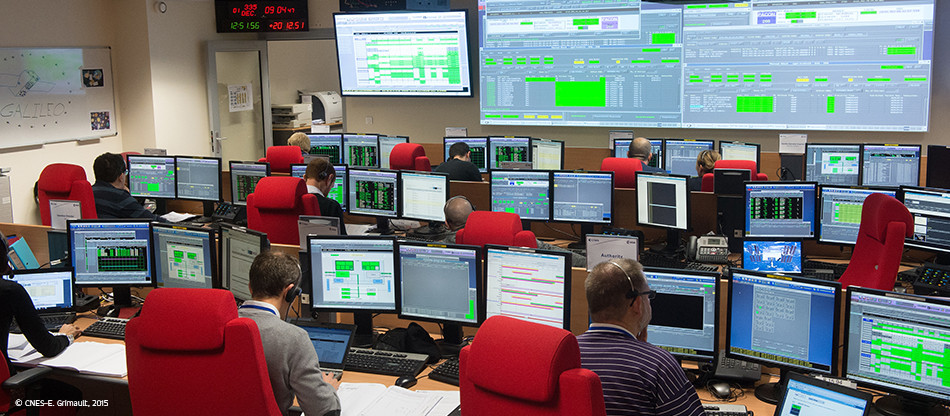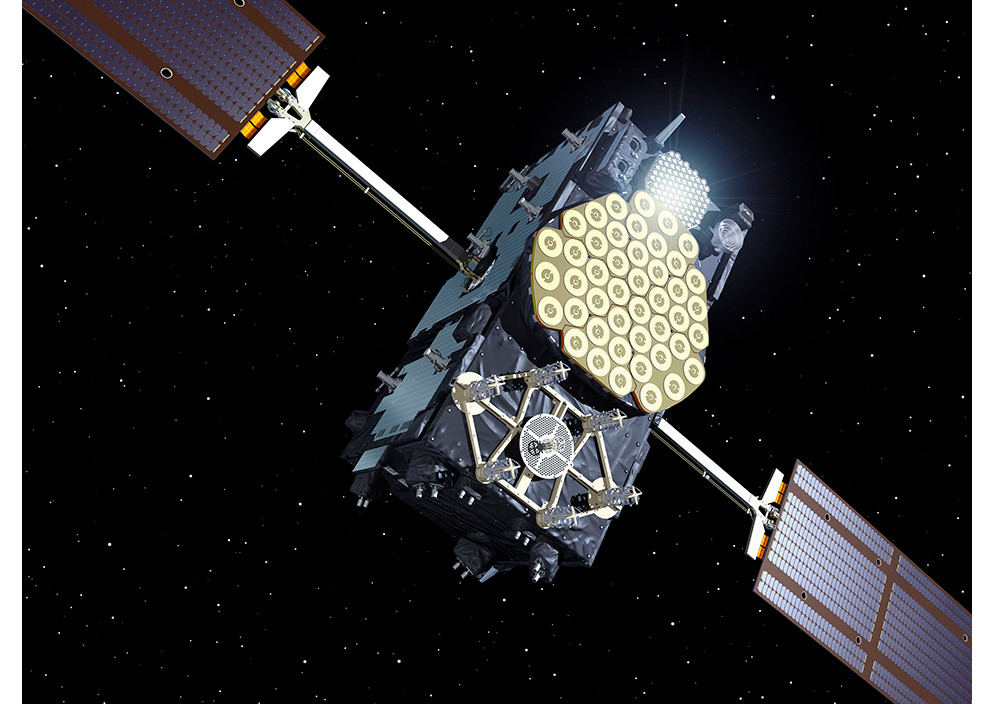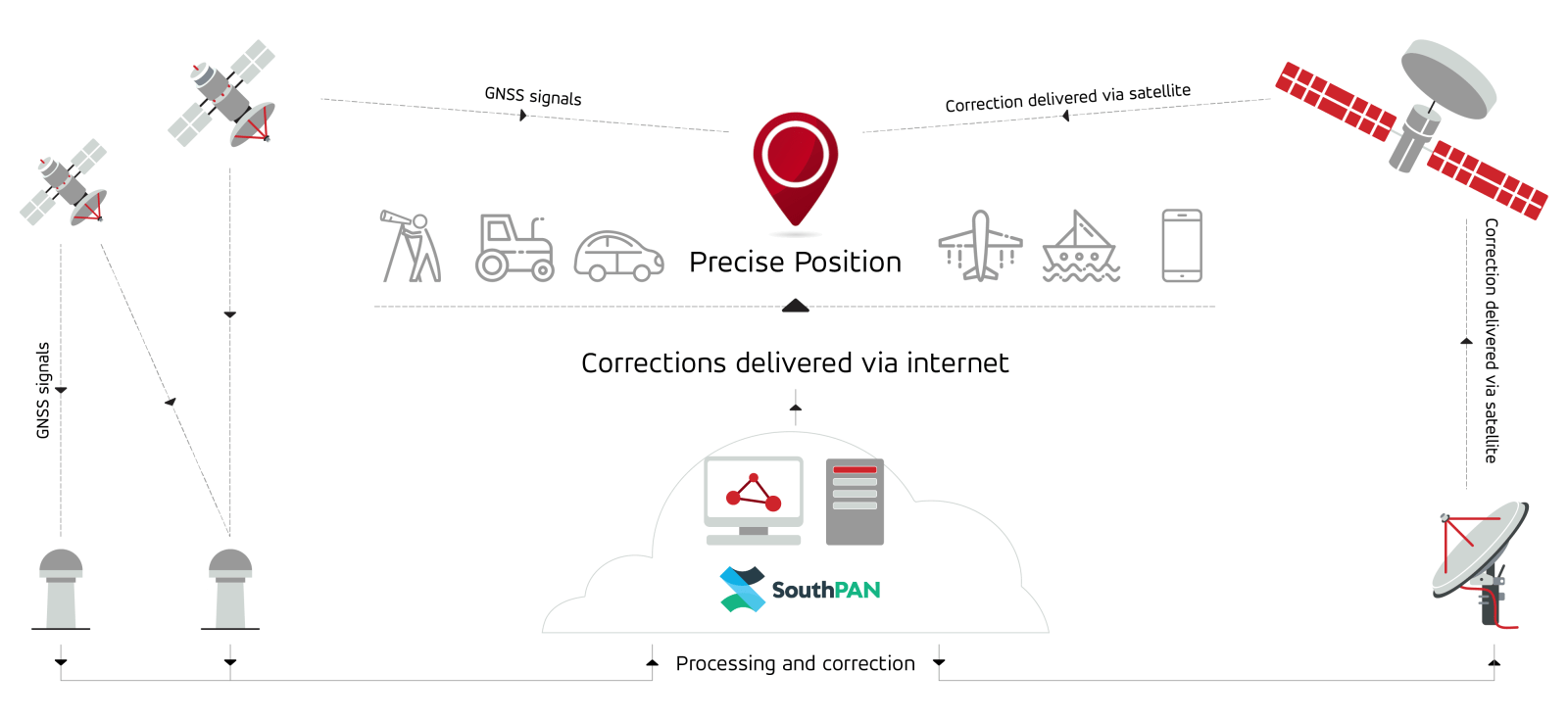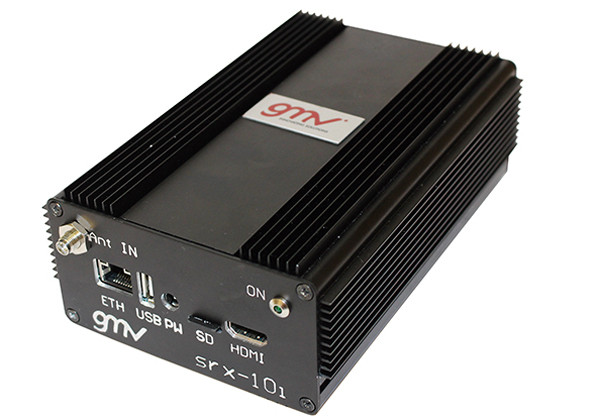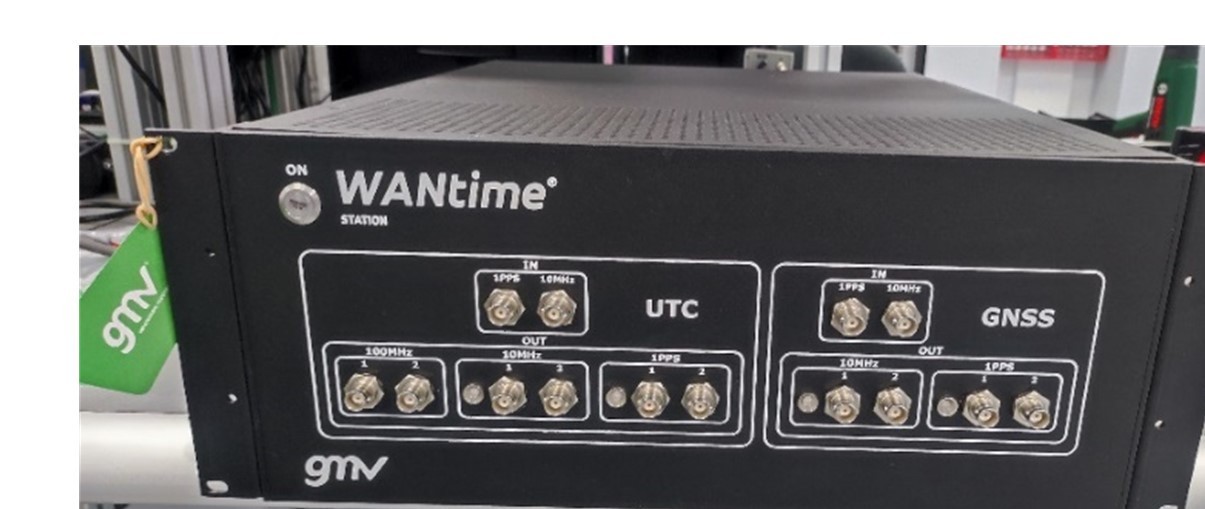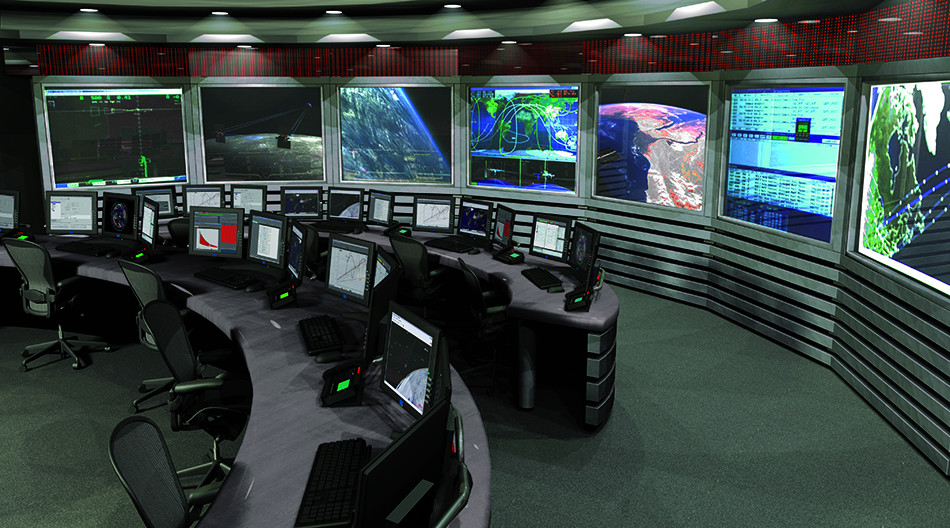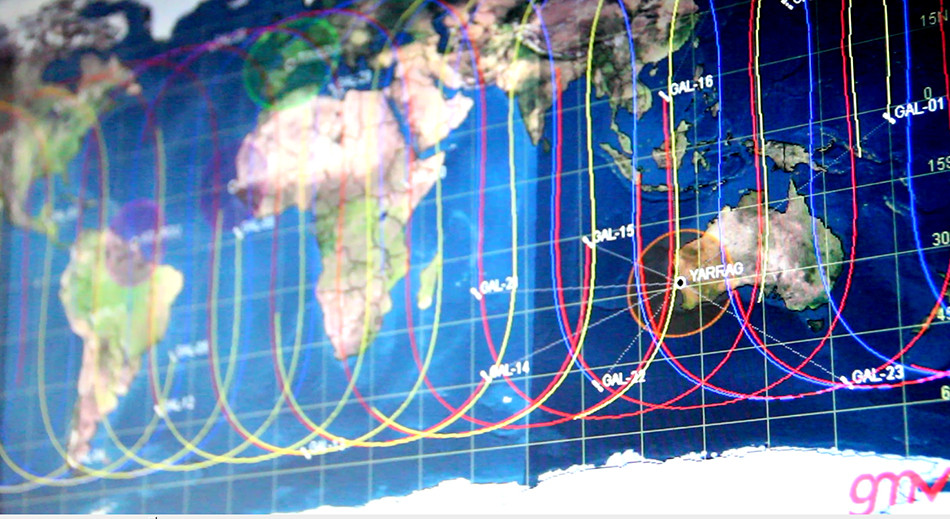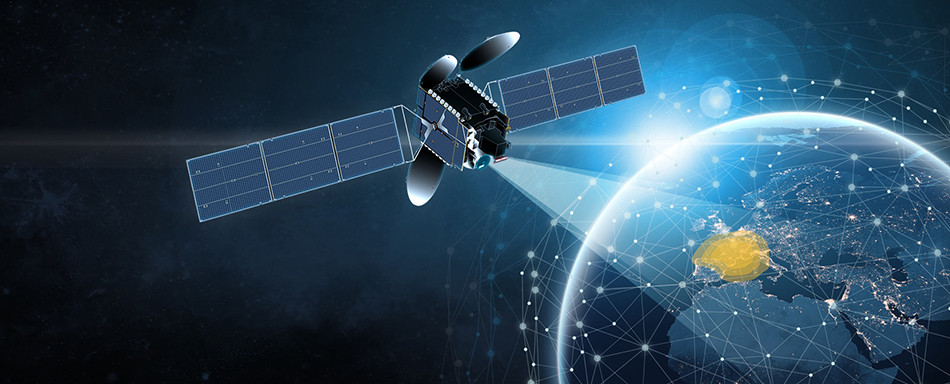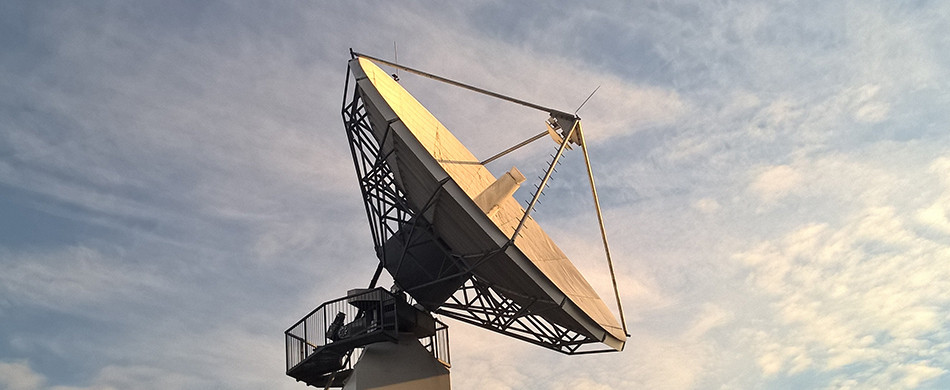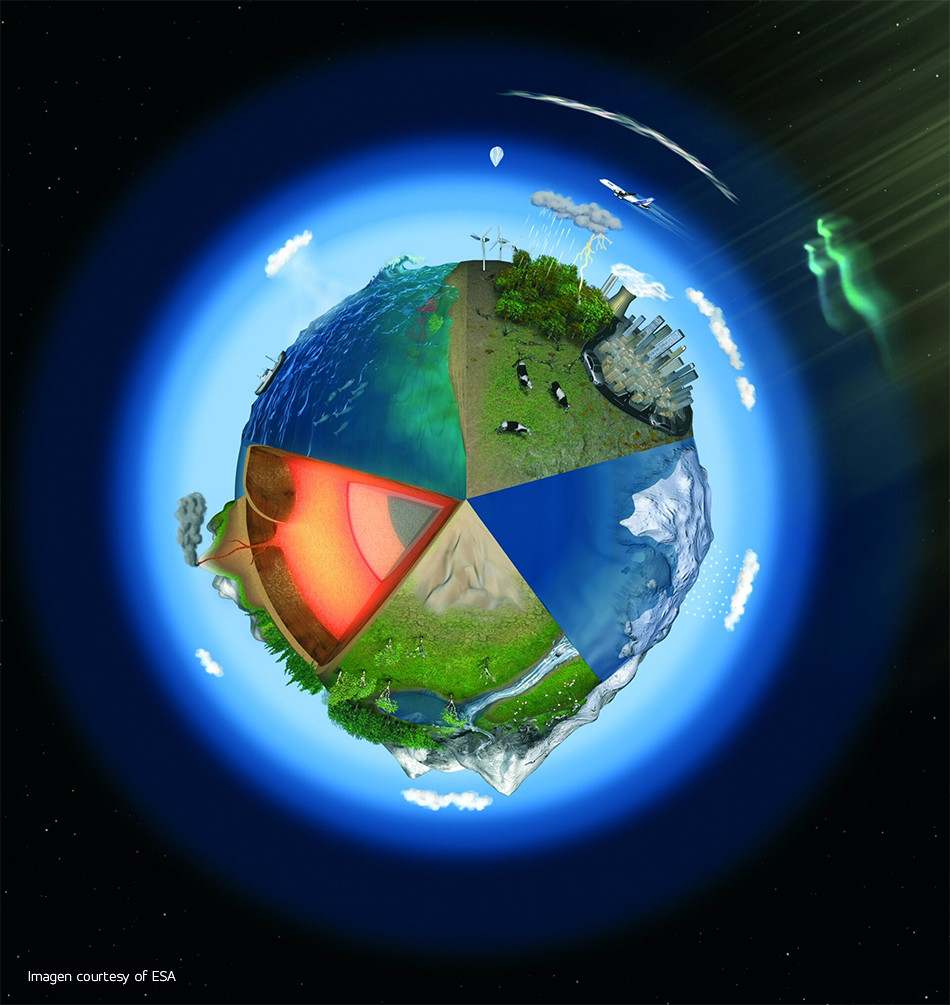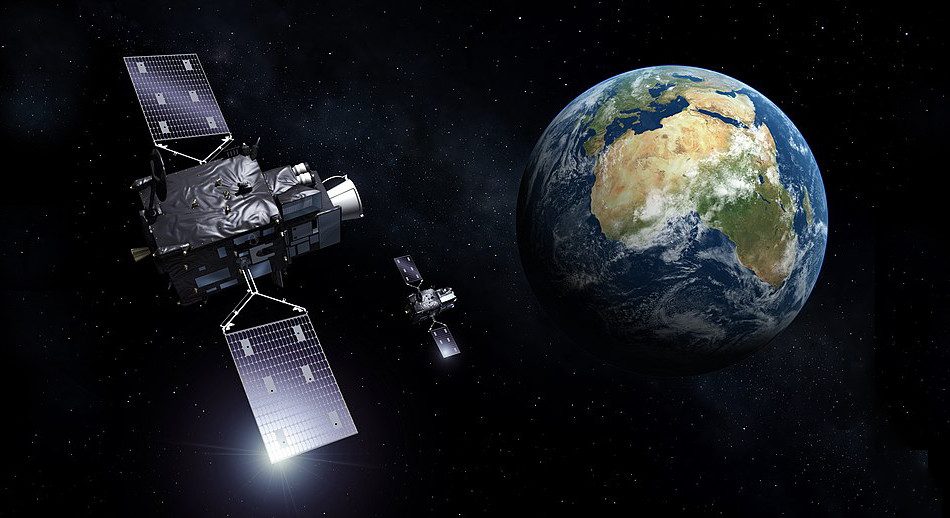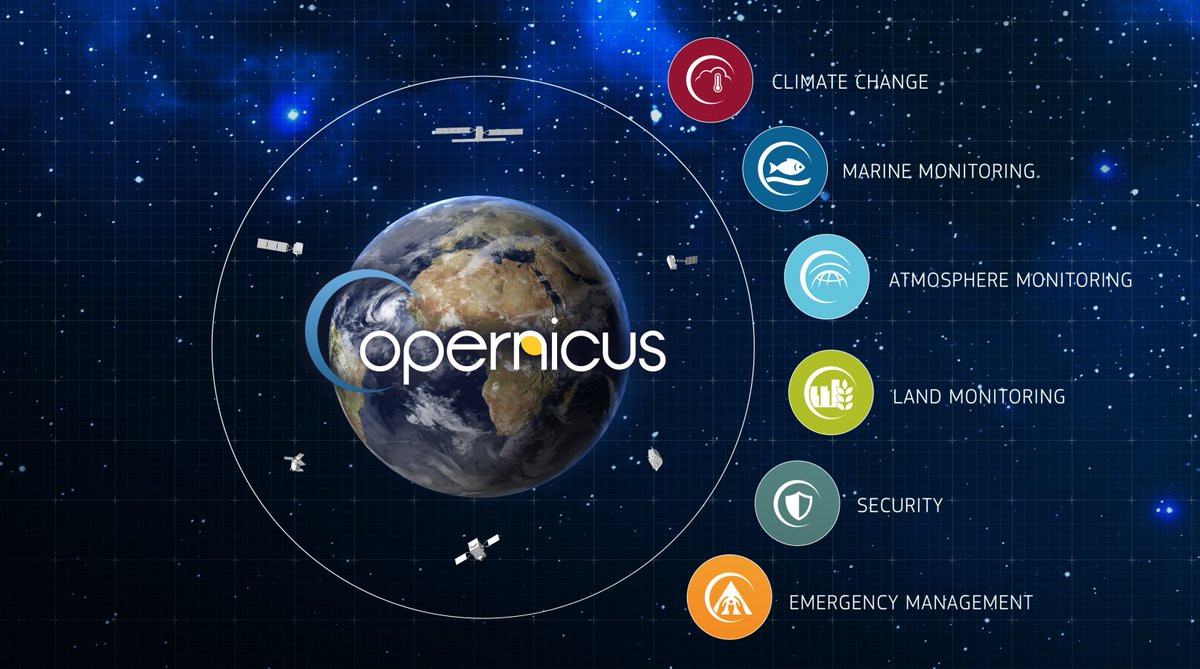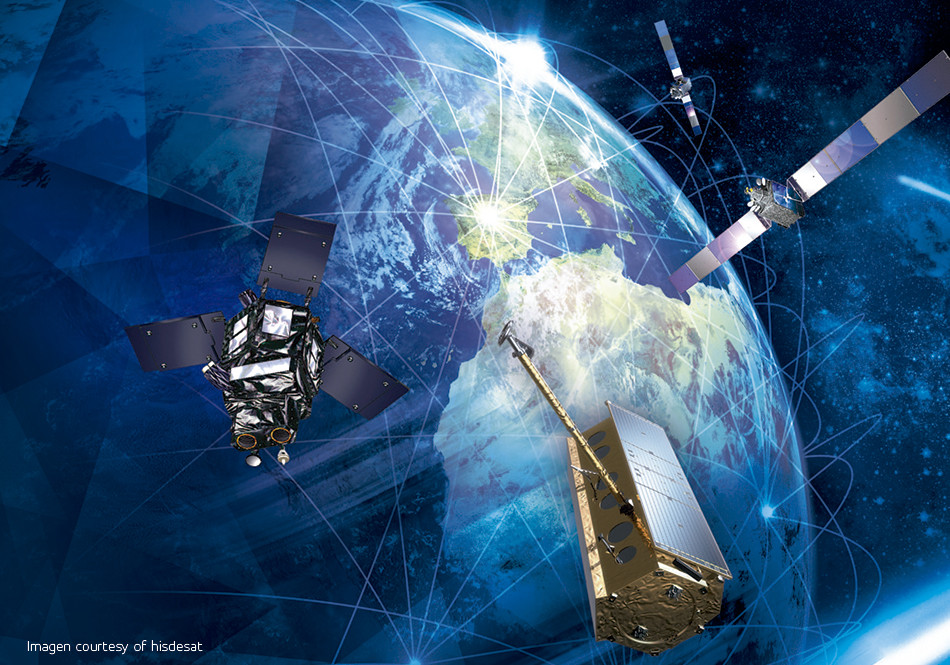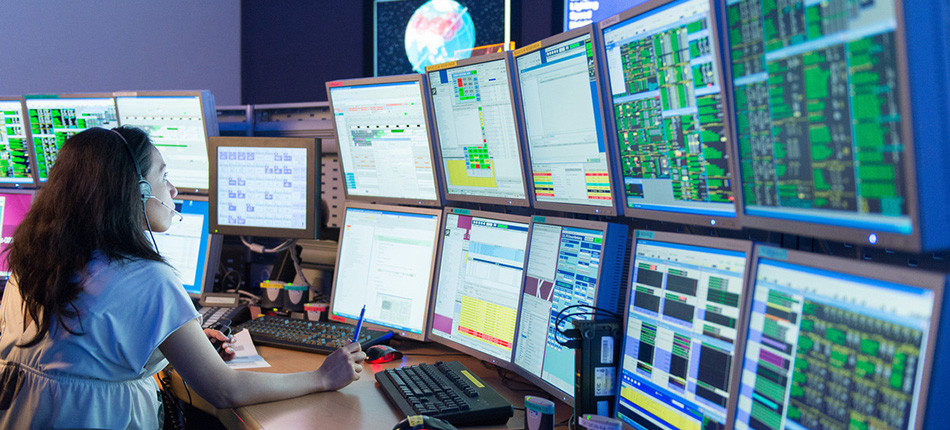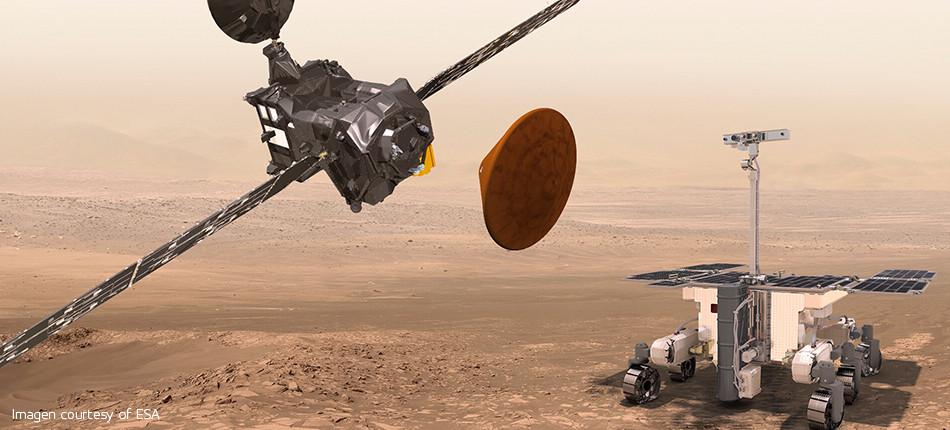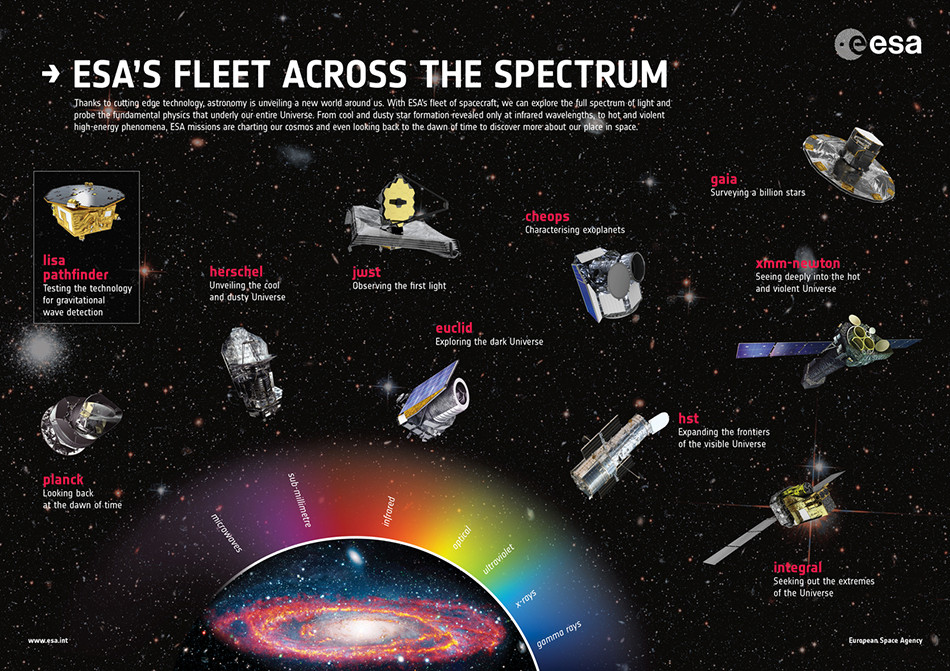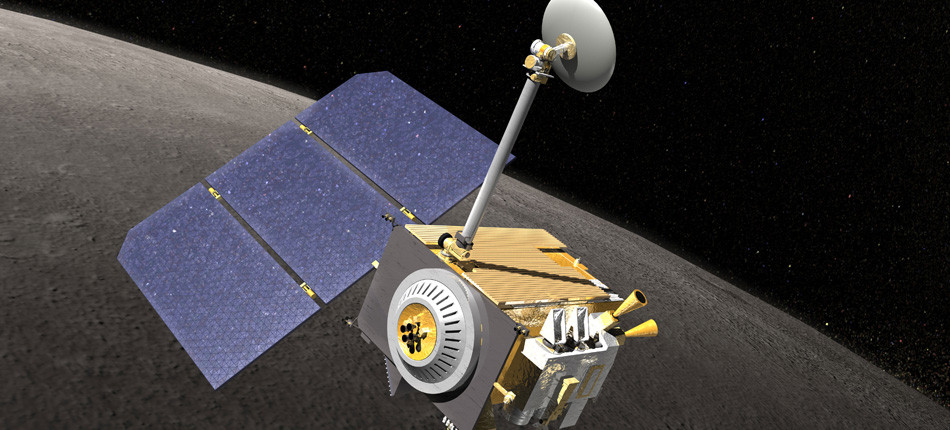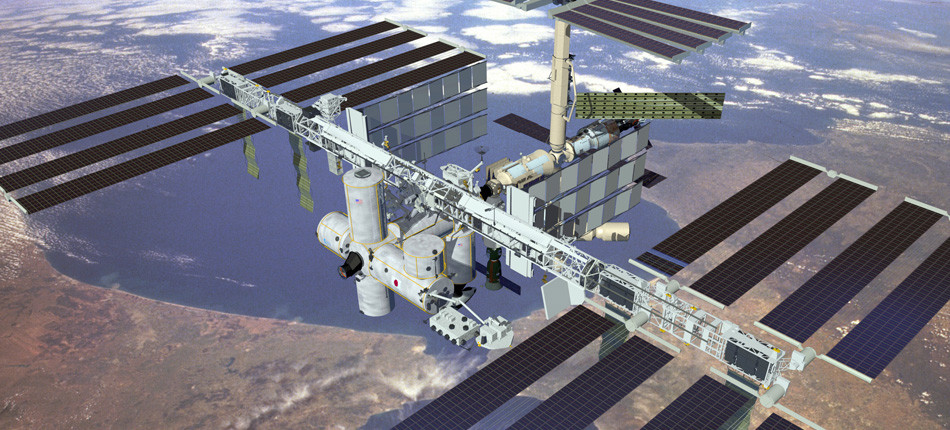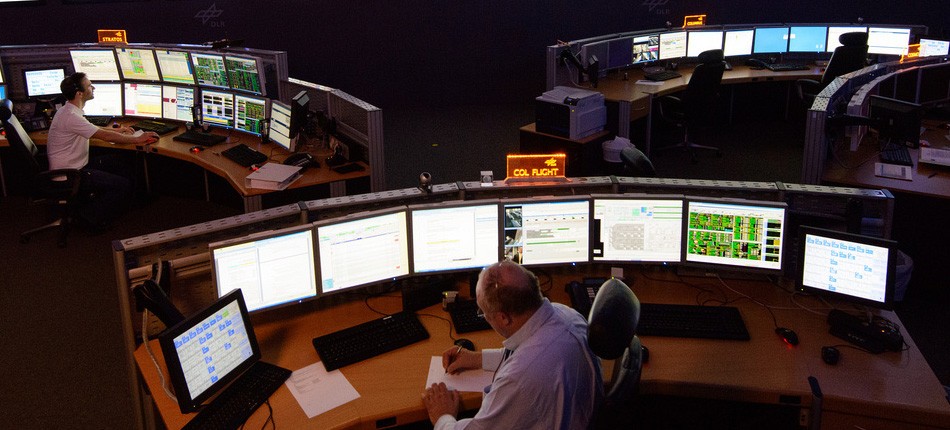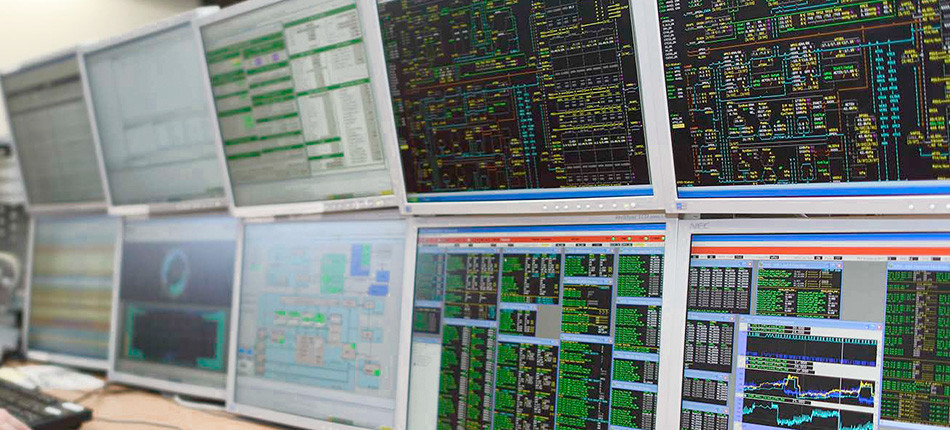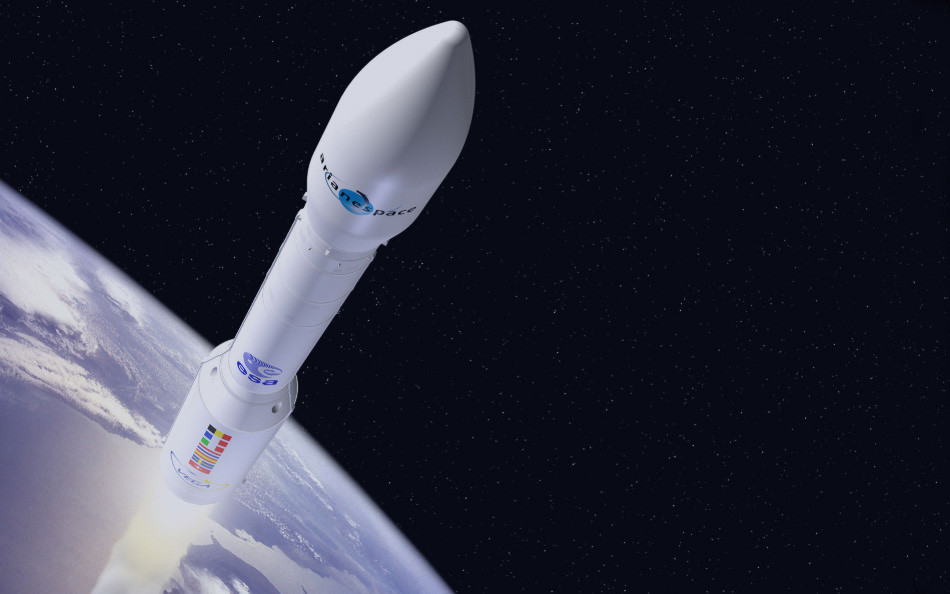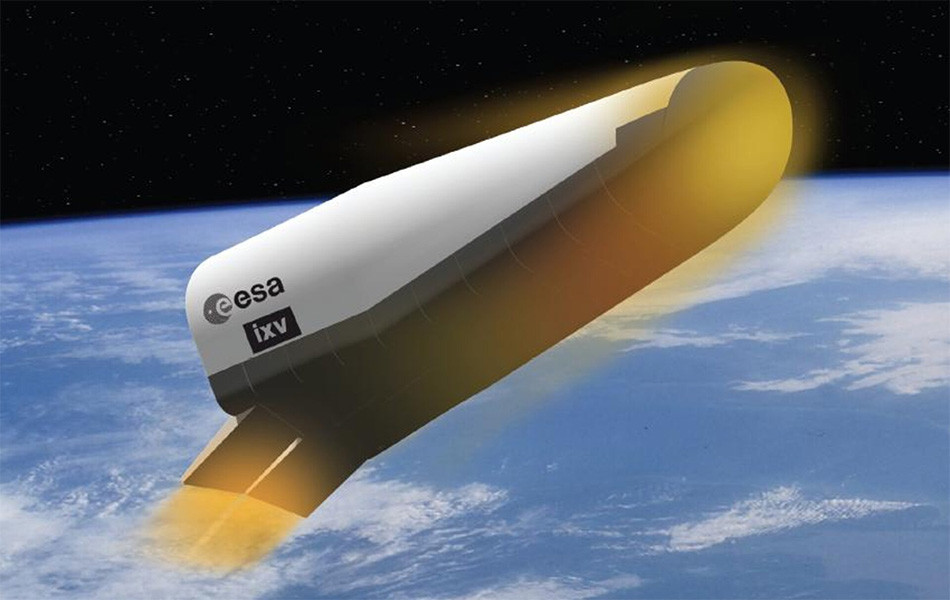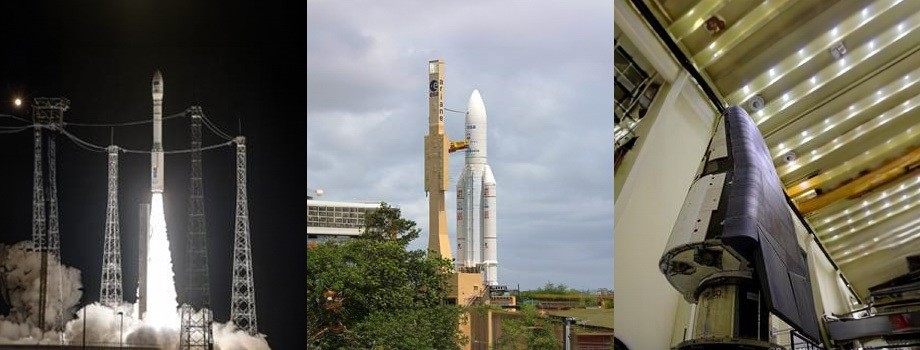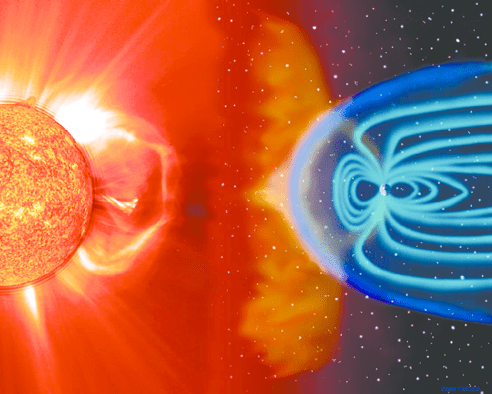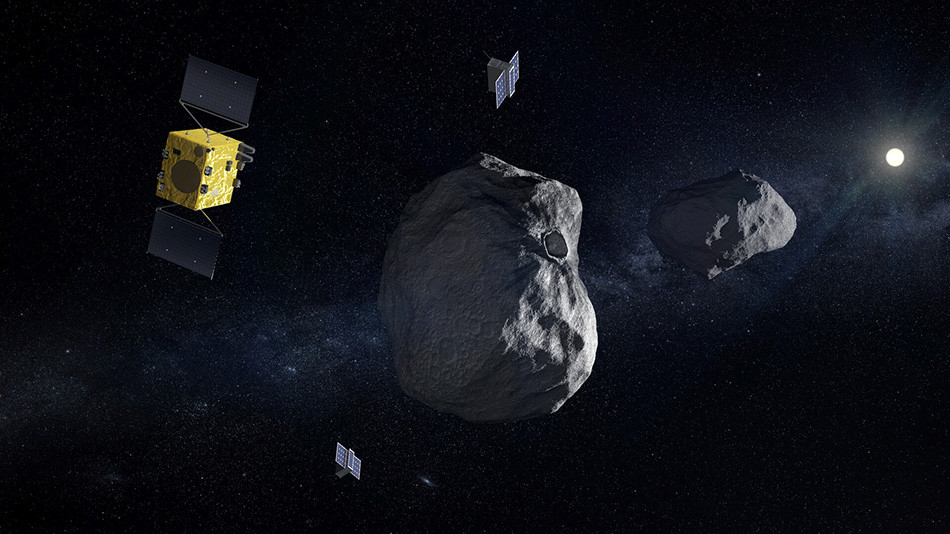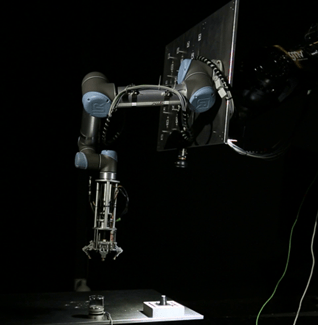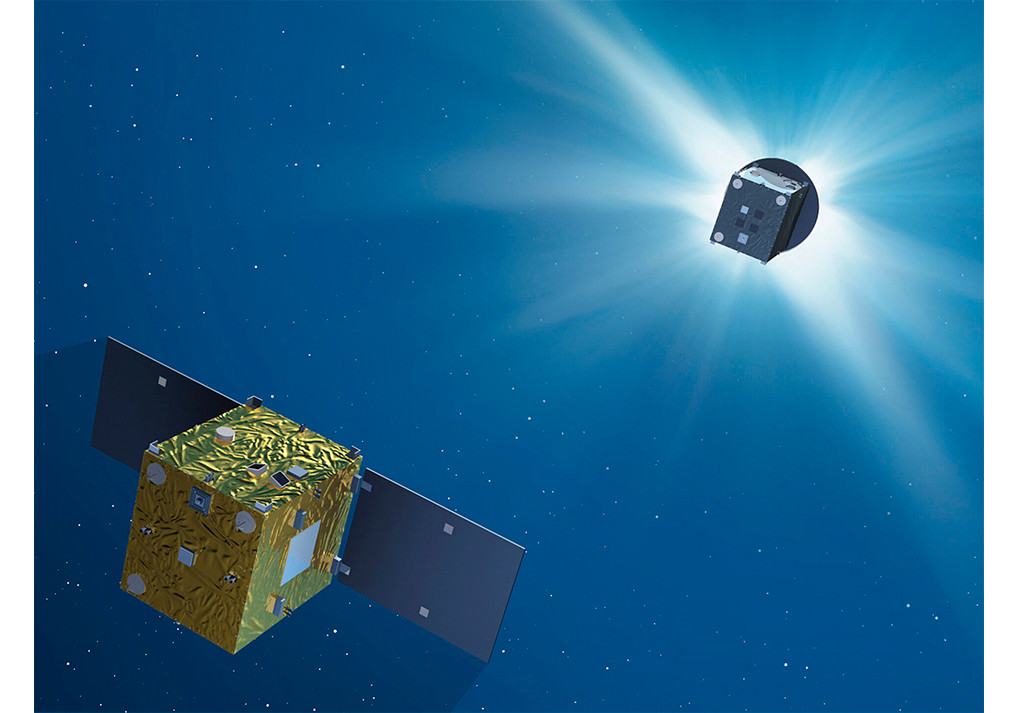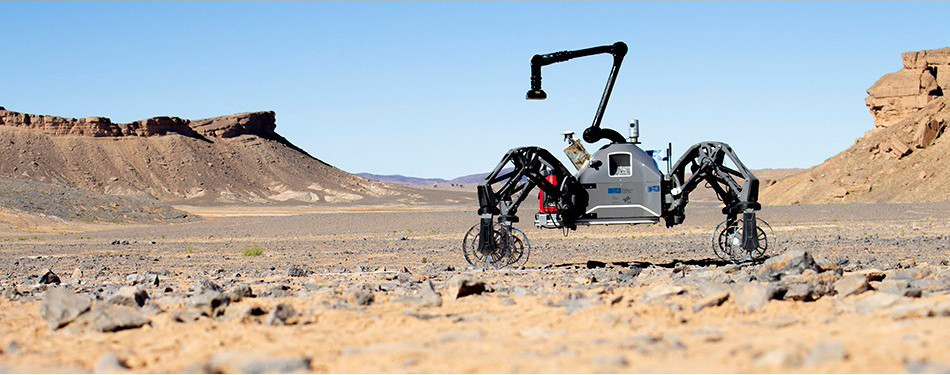Space
Space for all

Space for all
At GMV, we provide space agencies, satellite operators, and clients in the space sector from around the world the best high-tech solutions to meet your needs and obtain excellent results.
We have consolidated ourselves as a proactive and reliable partner, offering applications and complex hardware and critical software solutions and services to overcome the challenges faced by the space sector.
We design ground and flight systems for a wide variety of space missions that provide positioning, navigation, communication, security, science, exploration, and weather information.
working in the space sector, which represents 2.4% of all staff in the European space industry
in the European space sector after Airbus, ThalesAlenia, Ariane, Leonardo and OHB
and space vehicles incorporate GMV technology
provider of satellite control centers
General Information about GMV’s Participation in the Galileo Program
GMV is playing a key role in developing the Galileo program’s ground segment and operations, and in developing receivers and applications for the Public Regulated Service (PRS). The activities that GMV is performing include:
-
Development, evolution, and maintenance of the Galileo Ground Control Segment (GCS), with GMV as prime contractor for the European Space Agency (ESA). The GCS includes all ground segment infrastructure elements used to monitor and control the Galileo constellation, including operation of new satellites during the Launch and Early Orbit Phase (LEOP).
-
Development, evolution, and maintenance of key elements for the Galileo Ground Mission Segment (GMS), such as the Orbit Determination and Synchronization Processing Facility (OSPF), and the Engineering Tools Environment (ETE) used to analyze the system performance. GMV is also participating in development of the Galileo Security Monitoring Center (GSMC) and the Point of Contact Platform (POCP) used to monitor the security and manage the PRS service, which are included in the Galileo Ground Mission Segment framework.
-
GMV is the prime contractor for developing the infrastructure for various Galileo service centers, including the European GNSS Service Center (GSC), the Galileo Reference Center (GRC), the Return Link of the Galileo Search and Rescue Service (SAR‑RLSP), the High Accuracy Data Generator (HADG), and the Time and Geodetic Validation Facility (TGVF).
-
GMV is currently one of the prime contractors that ESA has selected to design the second-generation of the Galileo ground segment, and it has also been selected to develop several key technology elements such as the radio frequency constellation simulator (RFCS) and the test receivers for the new signals transmitted by the second-generation satellites.
-
In addition, GMV is actively participating in the Galileo program’s operations, as a member of the operations team for the Galileo Control Center located in Oberpfaffenhofen, Germany.
-
The company develops applications for the Galileo Public Regulated Service (PRS) based on receivers for this service developed by GMV. GMV is also developing the systems that the Spanish Competent PRS Authority (CPA) uses for the management of its PRS user communities.
Galileo Ground Control Segment
Since 2018, GMV has been the prime contractor selected by ESA for the development, evolution, and maintenance of the Galileo Ground Control Segment (GCS), including:
- The development of all elements used for monitoring and control of the entire Galileo constellation.
- The implementation of technological evolutions in the underlying infrastructure.
- The elements needed to perform operations for new satellites during their Launch and Early Orbit Phase (LEOP).
- Cybersecurity and security accreditation tasks for the entire ground control segment.
The volume of the contract amounts to €250 million euro, and the industry consortium led by GMV includes a dozen companies and a full‑time project team with more than 150 members.
Galileo Ground Mission Segment
GMV is developing several key elements for the Galileo Ground Mission Segment (GMS), such as the Orbit Determination and Time Synchronization Processing Facility (OSPF), and the Engineering Tools Environment (ETE) used to analyze the system performance, which includes prototypes of most of the GMS elements.
GMV is also participating in the development of the Galileo Security Monitoring Center (GSMC) and the Point of Contact Platform (POCP) used to monitor the security and manage the PRS service, which are included in the Galileo Ground Mission Segment framework.
Other elements that GMV developed during the program’s earlier phases include the Integrity Processing Facility (IPF), the Monitoring Network Equipment (MNE), and the Service Products Facility (SPF).
Galileo Service Centers
GMV is Europe’s leading company for developing Galileo Service Centers, being prime contractor of the following contracts:
-
Development, operation, and maintenance of the Galileo Time and Geodetic Validation Facility (TGVF) for ESA, located in the Netherlands.
-
Development, operation, and maintenance of the Galileo Reference Center (GRC) for EUSPA, located in the Netherlands.
-
Development and maintenance of the European GNSS Service Center (GSC) for EUSPA, located in Spain.
-
Development and maintenance of the ground infrastructure needed to operate the Return Link of the Galileo Search and Rescue Service (SAR‑RLSP) for EUSPA, located in France.
-
Development and maintenance of the High‑Accuracy Data Generator (HADG) for EUSPA, used for the provision of the Galileo High Accuracy Service (HAS).
Galileo Public Regulated Service
The Galileo Public Regulated Service (PRS) is a positioning service characterized by a high level of resilience and continuity of service under adverse operating conditions. Access to this service is restricted to duly authorized governmental users.
GMV is developing a variety of applications for the Galileo PRS, based on receivers for this service developed by GMV. In addition, GMV is developing the systems that the Spanish Competent PRS Authority (CPA), the National Aerospace Technical Institute (INTA), uses for the management of its PRS user communities, including those referred to as POC‑IS and secondary channel.
GMV participates very actively in PRS pilot projects, both in Spain and throughout Europe, in collaboration with military emergency units, geographical services, naval observatories, and research centers. GMV has also carried out PRS testing campaigns during various scientific expeditions in Antarctica.
GMV is part of an industry team responsible for evolution and maintenance of the Galileo Security Monitoring Center (GSMC) and the Point of Contact Platform (POCP), which are included in the Galileo Ground Mission Segment (GMS) framework. GMV is also responsible for the development of the Satellites Key Management Facility (SKMF), which is part of the Galileo Ground Control Segment (GCS).
GMV is participating in defining the evolution of the PRS, as one of the prime contractors selected by ESA to design the second generation of the Galileo ground segment, and it has also been selected to develop several key technology elements such as the radio frequency constellation simulator (RFCS) and the test receivers for the new signals transmitted by the second-generation satellites.
Galileo Program Operations
GMV is a member of the team responsible for the Galileo system operations performed at the Control Center located in Oberpfaffenhofen, Germany.
Engineers from GMV are supervising the daily contacts with the satellites, performing trend analysis, and participating in various special operational procedures, while also remaining available on-call to help resolve any contingencies that arise.
GMV’s engineers are also responsible for developing and validating new support procedures and tools for the operations, playing a key role in tasks automation. This is a fundamental aspect as the satellite constellation continues to grow, with the incorporation of new satellite models and generations.
Second Generation of Galileo
GMV is currently one of the prime contractors selected by ESA to design the second-generation Galileo Ground Segment (GSEG), which includes all elements related to control, missions, communication networks, and ground security monitoring.
ESA has also selected GMV to develop several key technology elements such as the radio frequency constellation simulator (RFCS) and the test receivers for the new signals transmitted by the second-generation satellites.
In addition, GMV is also providing trajectory optimization and mission analysis tools for the second generation of Galileo satellites.
General Information
GMV offers complete ground segments for telecommunications satellite missions, including flight dynamics, mission planning, real-time satellite surveillance and control systems, M&C ground stations, and payload management solutions.
GMV is the top independent provider of ground control systems in the world. Over 40 telecommunications operators and agencies and more than 300 satellites have selected GMV technology, and 40% of all commercial COMSATs launched in the past 10 years are controlled with our products and solutions.
Right from the start, our products navigate on the world’s leading commercial satellite platforms and provide standardized operational support for any number of satellites, whatever the model or manufacturer.
Our range of products for telecommunications enable manual and lights out operations, as well as unlimited customization options, so they adapt to our clients, and not the other way around.
GMV also provides operational support to a number of telecommunications satellite operators.
Products
Flight dynamics system tools for operations in the satellite launch and early orbit phase (LEOP), including transfer strategies
Satellite Constellation Management Support
Collision Risk Assessment Tool
Flight Dynamics System Tools For Satellites in Low (LEO) and Medium (MEO) Earth Orbits
Complete Cycle Support for Flight Dynamics Operations for Geostationary Satellites
FocusSuite®
The GMV suite for full lifecycle flight dynamics operations for any mission.
The complete solution for satellite operations
Satellite monitoring and control
Satellite and ground telemetry parameters archive
Satellite and ground procedure automation
Your ground resources under control
Your ground resources under control
Comprehensive management of the ground and flight segments
Operations Control Panel
Operations Coordinator
Satellite and Mission Control
GMV has worked on satellite command and control systems since 1986 and, after all those years, it has undoubtedly become the top provider for commercial telecommunications operators. Nearly 40% of the global telecommunications satellite launches are controlled by our portfolio of products, specifically the hifly® and fleet families.
GMV provides immediate support for command and control to all commercially relevant telecommunication satellite platforms, from single nanosatellites to mega-constellation solutions, including Astrium, Boeing Satellite Systems, Lockheed Martin, Northrop Grumman, Maxar, Thales Alenia Space, Mitsubishi Electric Space Systems, OHB Space Systems, ISRO, and ISS Reshetnev.
Our command and control systems are used by institutional systems on both sides of the Atlantic (NASA Goddard, NASA Johnson, USGS, JPL, ESA, EUMETSAT, CNES, etc.), as well as by commercial operators from around the world (Arabsat, Azercosmos, BRISat, Eutelsat, Hispasat, Hellas SAT, MEASAT, NBN Co, Nilesat, Optus, SES Astra, SES Americom, SES New Skies, SES-Sirius, Star One, Thaicom, Turksat, and Visiona).
Products
The complete solution for satellite operations
Satellite monitoring and control
Satellite and ground telemetry parameters archive
Satellite and ground procedure automation
Comprehensive management of the ground and flight segments
Operations Control Panel
Operations Coordinator
Flight Dynamics
GMV is a global point of reference in operational flight dynamics systems and orbit determination. One of the keys to success lies in the excellence of its technology and its COTS products (FocusSuite® family), which is the result of a significant and prolonged investment in R&D.
GMV is the leading provider worldwide of control centers for telecommunications satellite operators. Its best selling products are flight dynamics systems, which are now present on more than 200 satellites.
The COTS products set GMV apart from the competition, as they provide a proven multi-mission and multi-platform flight solution that can be easily configured and scaled to support future missions. In fact, GMV is not only compatible with most commercial platforms from American and European manufacturers, but also with manufacturers from other regions, including Asia, as is the case for MELCO.
The GMV FocusSuite® family covers a wide range of support products for flight dynamics operators in all types of missions, such as GEO, HEO, LEO, MEO, and constellations. Some of the unique functions provided are automation, conjunction analysis and advanced viewing and analysis tools.
GMV’s client portfolio in the telecommunications sector includes Arabsat, Avanti, Azersat, BRIsat, Catapult, CDTI, DLR, ESA, eumetsat, Eutelsat, GalobalIP, Globalstar, GSA, HellasSat, Hisdesat, Hispasat, Inmarsat, INTA, Intelsat, JPL, JsatSkyperfect, Kari, Measat, NBN.co, Newsat, Nilesat, NOAA, O3B, Optus, PSN, Roscosmos, SpaceNorway, StarOne, Telenor, Telespazio, Thaicom, Türksat, Visiona, Worldspace, Yahsat, among others.
Products
Flight dynamics system tools for operations in the satellite launch and early orbit phase (LEOP), including transfer strategies
Satellite Constellation Management Support
Collision Risk Assessment Tool
Flight Dynamics System Tools For Satellites in Low (LEO) and Medium (MEO) Earth Orbits
Complete Cycle Support for Flight Dynamics Operations for Geostationary Satellites
FocusSuite®
The GMV suite for full lifecycle flight dynamics operations for any mission.
Payload Management Systems
GMV has taken part in supplying payload management solutions in the telecommunications sector since 2006, the year Smartrings was installed as part of the ground segment tool. Today, the SmartPayload product portfolio, designed for intelligent payload management, meets the needs of all types of payloads in the telecommunications sector, from traditional payloads to those defined by software. This enables simple and secure operations that optimize the satellite resources, while minimizing interference.
These tools integrate with the rest of the GMV products to facilitate satellite and mission control, which lead to highly autonomous operations, if required.
GMV offers ready-to-use products, CONOPS and support throughout the mission, although the customization options are unlimited. The SmartPayload family of products incorporates algorithms from various sources:
- From the manufacturer: it integrates algorithms provided by the payload manufacturer.
- Proprietary development: GMV develops proprietary algorithms (bent pipe ring redundancy solver, directable mechanical antennas, etc.).
- Public: GMV implements public algorithms (classification of multiple signals, ITU-R, DVB-S2, etc.)
GMV’s top references are Airbus, Arabsat, Avanti, Eutelsat, Hellasat, Hispasat, Optus, Star One, Turksat, Visiona, and Yahsat.
Solutions
SmartPayload for flexible satellites
Solution for VHTS and software defined SATCOM payload operations
Full failure recovery solutions for complex redundancy rings
GMV LEO constellation SATCOM network management system
Ground Station Monitoring and Control
GMV’s product portfolio provides monitoring and control functions (e.g., with the products in the magnet family) for telecommunications mission ground stations.
Our solutions cover everything from single antenna systems to networks of multi-antenna ground stations distributed geographically, integrated into a single, standardized interface that covers local and remote monitoring and control, which enables manual operations and fully automated operations (procedure-based) for quick, reactive reconfiguration of the ground chains.
Our primary references are Eutelsat, Azercosmos, NBN Co, Visiona, Gilat & NWIEE, Pasifik Satelit Nusantara (PSN), EUMETSAT (EPS Second Generation), and Bank Rakyat Indonesia (BRI).
Products
Your ground resources under control
Your ground resources under control
Satellite and ground telemetry parameters archive
Satellite and ground procedure automation
General Information
GMV has developed systems for 80 Earth observation (EO) satellites on missions for the ESA, EUMETSAT, Copernicus, CNES, DLR, NASA, and Hisdesat.
The company plays an important roll on European meteorological missions as the lead contractor for the second-generation ground control segments of the EUMETSAT (EPS SG) polar system and the third generation of Meteosat (MTG). We also develop instrument data processing systems and the quality tool for the MTG instruments. Within the framework of EPS SG, GMV is developing the Ground Processor Prototype for the dispersometer.
It also makes key contributions, such as satellite control centers, flight dynamics, mission planning, end-to-end simulations, and instrument data processing on all ESA Earth Explorer missions (including SMOS, GOCE, Aeolus, Cryosat, Swarm, and EarthCARE).
Copernicus, the world’s largest Earth observation program, also includes a great deal of GMV technology. For this program, GMV developed the satellite control centers and flight dynamics systems for all the Sentinels. It also developed satellite simulators, mission planning, and instrument processing systems for most Sentinels. In addition, it provides the operational service for precise orbit determination (POD) for the entire Copernicus program and has signed a major framework contract with the EU to define the next generation of the Copernicus space segment.
GMV is also one of the leading collaborators on the National Earth Observation Program, where the company's full force came together to ensure the excellent performance of the Paz and Ingenio satellites. It also works with NASA and NOAA on their Landsat, GOES-R, and OCO missions.
Products
Satellite and ground telemetry parameters archive
Satellite and ground procedure automation
Earth Observation Services for Climate Resilience
Earth Observation services for Marine and Maritime Monitoring
Flight Dynamics as a Service
Collision Risk Assessment Tool
Satellite Constellation Management Support
Passive RF tracking system to support Flight Dynamics and Space Surveillance activities
Complete Cycle Support for Flight Dynamics Operations for Geostationary Satellites
Flight Dynamics System Tools For Satellites in Low (LEO) and Medium (MEO) Earth Orbits
Flight dynamics system tools for operations in the satellite launch and early orbit phase (LEOP), including transfer strategies
Conjunction analysis and collision risk assessment service supporting all types of orbital regimes and missions.
End-to-end solution for Precise Orbit Determination (POD) and Geodesy
FocusSuite®
The GMV suite for full lifecycle flight dynamics operations for any mission.
A Real General Planning and Scheduling System
The GMV suite for payload data ground segment
The complete solution for satellite operations
Satellite monitoring and control
Definition, evaluation, and optimization of station keeping strategies for geostationary satellites
XRC (eXperimental Receiver Canvas) is an engineering SW receiver, that allows the processing of GNSS multiple signals in multiple approaches
Earth Explorers
GMV’s contribution is key to the ESA Earth Explorer missions.
GMV developed the mission control system for ERS-1, Cryosat 1/2, GOCE, SMOS, SWARM, and EarthCARE.
Within the scope of the payload data processing ground segment, GMV developed the data processors for SMOS (L0), Swarm L1b, L1b NRT & L2, EarthCARE L0, BBR L1b, MSI L1b, and Lidar L1b/L1c.
GMV engineers working at the ESOC facilities in Darmstadt, Germany, provide flight support to all Earth observation missions, as well as operational support.
GMV has provided mission analysis for BIOMASA, FLEX, EarthCARE, CarbonSat, CoReH2O, and PREMIER.
In the area of satellite simulators, GMV has provided the end-to-end performance simulator for FLEX and PREMIER, the instrument simulator for CarbonSat and the operational simulator for EarthCARE.
Products
Flight dynamics system tools for operations in the satellite launch and early orbit phase (LEOP), including transfer strategies
Satellite Constellation Management Support
Collision Risk Assessment Tool
Flight Dynamics System Tools For Satellites in Low (LEO) and Medium (MEO) Earth Orbits
Complete Cycle Support for Flight Dynamics Operations for Geostationary Satellites
FocusSuite®
The GMV suite for full lifecycle flight dynamics operations for any mission.
The complete solution for satellite operations
Satellite monitoring and control
Satellite and ground telemetry parameters archive
Satellite and ground procedure automation
EUMETSAT
GMV is one of EUMETSAT's primary vendors.
It is the lead contractor for the mission control and operations system (MCO) for the second-generation EUMETSAT (EPS SG) polar system and the mission operations facility (MOF) for the third generation of Meteosat (MTG). These are two major contracts covering the entire ground control segment for the EPS-SG and MTG series satellites.
In the case of EPS-SG, GMV has also developed tools and a dispersometer simulator for processing on the ground.
In the case of MTG, GMV is also one of the primary contributors of the ground segment for payload data, as it is responsible for the development of the instrument quality tool and instrument data processing systems.
GMV experts also provide on-site services to EUMETSAT in the area of ground system operations and engineering.
Copernicus
GMV is one of the primary vendors of Copernicus program infrastructure.
The company developed satellite control centers for all Sentinels. It also integrated the entire flight operations segment of the third Sentinel for EUMETSAT.
In the payload data ground segment, GMV has developed the instrument processing system of the second Sentinel, the ocean and land color control instrument (OLCI) software, and mission planning for the first, third, and sixth Sentinels.
It has also developed and runs the precise orbit determination (POD) operational service for the entire Copernicus program constellation.
In terms of operational simulators, GMV developed simulators for the Sentinel-1 and Sentinel-5P satellites.
GMV is also working under a contract for the European Commission to define the next generation of satellites in the Copernicus space program.
Products
Flight dynamics system tools for operations in the satellite launch and early orbit phase (LEOP), including transfer strategies
Collision Risk Assessment Tool
Flight Dynamics System Tools For Satellites in Low (LEO) and Medium (MEO) Earth Orbits
Complete Cycle Support for Flight Dynamics Operations for Geostationary Satellites
FocusSuite®
The GMV suite for full lifecycle flight dynamics operations for any mission.
Satellite Constellation Management Support
PNOTS: National Earth Observation Program
In Spain, the National Earth Observation Program counted GMV among its primary contributors.
In the space segment, GMV has carried out mission analysis activities and developed the Ingenio operational satellite simulator. The Ingenio ground processor prototype was also developed as part of the space segment contract framework.
In the ground segment, GMV has played a leading role, as it was responsible for the entire ground control segment for the Ingenio and Paz satellites. The company's responsibilities include satellite control centers, flight dynamics, and mission planning. The payload data ground segment is another one in which GMV has played an important role, as it was responsible for mission planning and user services.
Products
Flight dynamics system tools for operations in the satellite launch and early orbit phase (LEOP), including transfer strategies
Satellite Constellation Management Support
Collision Risk Assessment Tool
Flight Dynamics System Tools For Satellites in Low (LEO) and Medium (MEO) Earth Orbits
FocusSuite®
The GMV suite for full lifecycle flight dynamics operations for any mission.
The complete solution for satellite operations
Satellite monitoring and control
Satellite and ground telemetry parameters archive
Satellite and ground procedure automation
A Real General Planning and Scheduling System
Complete Cycle Support for Flight Dynamics Operations for Geostationary Satellites
DLR/NASA/NOAA
GMV engineers have participated heavily in the development, launch, and routine operations of several missions in the DLR (Deutsches Zentrum für Luft- und Raumfahrt), in Oberpfaffenhofen, Germany.
Past and present Earth observation missions include CHAMP, GRACE, TerraSAR-X, TanDEM-X, GRACE-FO, and EnMAP.
GMV has also made significant contributions to NASA and NOAA missions. Our top references are the GOES-R/S flight dynamics system, the Landsat mission archive and planning, and the OCO/OCO-2 and GLORY flight dynamics systems, among others.
Products
Flight dynamics system tools for operations in the satellite launch and early orbit phase (LEOP), including transfer strategies
Satellite Constellation Management Support
Collision Risk Assessment Tool
Flight Dynamics System Tools For Satellites in Low (LEO) and Medium (MEO) Earth Orbits
Complete Cycle Support for Flight Dynamics Operations for Geostationary Satellites
FocusSuite®
The GMV suite for full lifecycle flight dynamics operations for any mission.
A Real General Planning and Scheduling System
General Information
GMV has developed systems and technologies for exploration and science satellites for ESA, NASA, and Roscosmos missions, among others.
It participates notably in the space segment as well as in operations and the ground segment. Developments in the space segment include mission analysis, satellite simulators, AOCS/GNC systems and technologies, onboard software, and validation tools. GMV’s offering in the ground segment includes both ground control segments and rover operations and science operations centers. GMV engineers also provide operational on-site support to most European robotic and scientific exploration missions.
Products
A Real General Planning and Scheduling System
Missions to the Moon and Mars
GMV is one of the leading collaborators on the ESA Exomars mission. For Exomars 2016, it developed the onboard software for the GNC entry, descent, and landing system. It is also responsible for the onboard software for Exomars 2021. GMV was also responsible for the design, development, integration, and validation of the rover control system for the ground segment.
GMV is leading ESA technology actions for future missions to Mars, such as the Mars Sample Return mission. It has the most advanced control, navigation, and guidance technology in Europe to conduct complex approach and coupling missions, as well as autonomous operations with rovers.
It also plays an important role in the area of landing precision in future moon missions, such as Luna-Resurs, a collaboration between the ESA and the Russian space agency Roscosmos, and on the Heracles robotic mission.
ESA's Fleet in the Solar System
GMV’s extensive collaboration with the ESA includes multiple activities on the Agency's scientific missions.
GMV developed the Bepi-Colombo mission control systems, SOLO and JUICE, and plays an important role on the operations and flight dynamics team at the ESA’s European Space Operations Center (ESOC), including the great challenge of the Rosetta mission.
GMV staff at the ESA European Space Astronomy Center (ESAC) provide support to scientific operations on all of ESA’s scientific missions.
In the space segment, GMV has developed the navigation camera for JUICE and contributed to the AOCS mission. It also performs important functions in the A/B1 phases on the THESUES and SPICA missions.
ESA's Fleet across the Spectrum
GMV also provides support to ESA missions beyond the solar system.
The company has developed the entire ground control segment and the CHEOPS satellite simulator, the first ESA class S mission.
GMV personnel working at the ESOC and the ESAC play an important role in flight dynamics and operations.
GMV has notably contributed to the Gaia mission's demanding processing requirements. It is also overseeing the development and validation of the onboard software on Euclid and Lisa Pathfinder.
NASA and the Russian Space Agency Roscosmos
In addition to the ESA missions, GMV has also provided suppliers to other agencies, such as NASA and the Russian space agency Roscosmos. Some of the most important projects are NASA’s lunar reconnaissance orbiter (LRO), for which GMV developed the mission planning system.
Within the framework of a bilateral cooperation agreement, GMV designed and developed the entire ground segment for the World Space Observatory-Ultraviolet (WSO-UV) for Roscosmos.
Products
A Real General Planning and Scheduling System
General Information
Within the framework of a contract with the German Aerospace Center (DLR), GMV engineers in Germany have been working for years on the ESA Columbus project. Columbus is the European scientific laboratory and part of the international space station.
The monitoring and control module from the Columbus Control Center (Col-CC), located at the DLR's German Space Operations Center (GSOC) in Oberpfaffenhofen, outside Munich, Germany.
Our contributions cover everything from the design, integration, and validation of the ground system to engineering and operations maintenance and development of software tools.
Products
Web-based software suite offering 24/7 support for mission-critical operations
Ground Segment
Our experience with systems engineering in critical mission environments has been key to the design, implementation, integration, validation, and maintenance of the Columbus ground segment.
GMV is currently working on the engineering and sustained operations of the ground segment's system and subsystems. Our engineers are responsible for daily system maintenance and updates.
The experience and contributions of GMV engineers cover a wide range of subsystems, from data distribution (DaSS), high-speed data streamer, monitoring and control (MCS), and video distribution (ViDS) to the interconnection ground subnetwork (IGS).
GMV is also deeply involved in the design of the future data systems, e.g., the framework of an ESA study on delay-tolerant networking (DTN). As part of this project, we have researched the possible benefits of DTN and developed scenarios and a simulator for DTN networks.
Products
Web-based software suite offering 24/7 support for mission-critical operations
Operations and Planning
At the Columbus Control Center, GMV is the top provider of services for real-time in-flight and ground operations. Our engineers monitor and control the onboard thermal, environmental, computer, and power systems and interact directly with the flight control team at the Johnson Space Center, in Houston, and the Marshall Space Flight Center, in Huntsville, Alabama.
GMV ground control engineers monitor and control the telemetry and control, video, and voice systems to support all Columbus operations. Incoming data from the ISS are sent to the Columbus Control Center, where they are filed and distributed to 10 European user centers. We provide the real-time support needed to keep the ground system functioning and maintained.
Our mission planners coordinate onboard experiments with the European research centers responsible for guaranteeing that all assets have sufficient resources allocated on board the ISS. With regard to the ground segment, we are responsible for providing support to preparation and planning activities, always with strict respect for the applicable requirements and limitations.
Products
Web-based software suite offering 24/7 support for mission-critical operations
GMV develops software applications in many areas, such as operational support, complex system simulations, 3D views, high-speed data distribution, video, databases, and client/server applications, among others.
All this practical knowledge, combined with our experience in operations, allows us to develop a set of operational support tools (OST). This suite provides the framework for processes such as generating information and problem reports, processing changes, programming resources, managing events, documenting communications, and managing the information flow. These web-based modular tools are designed to easily transfer to foreign systems.
To facilitate training on operations, GMV engineers have developed the Columbus Desktop Trainer, a powerful simulator that can be configured to use simulated data generated internally, real-time system data aimed at the Desktop Trainer or a combination of the two. More information on the Columbus Desktop Trainer.
GMV created another training simulator to simulate a Ka band antenna, which provides the Columbus module with additional capabilities for uplink and downlink through the EDRS constellation. This simulator was developed using the ESOC SIMULUS framework, and the Columbus flight control team uses it for training, simulations, and procedure validation.
GMV also developed a 3D viewing tool for the ISS and the Columbus module. orbitSIM complements training and presentations with a high-quality interactive 3D view of spaceship mechanics.
Products
Web-based software suite offering 24/7 support for mission-critical operations
General Information
GMV’s evergrowing experience in avionics and onboard guidance, navigation, and control is clear in space transportation.
GMV has developed key systems for a series of load systems, such as ATV, IXV, and the Space Rider. In launchers, GMV is maturing its avionics technology within the framework of the ESA’s VEGA program and with the cooperation of PLD Space.
GMV is also one of the leading European companies in the development of advanced technology for future space transportation systems, such as our advanced avionics test bench.
Load Vehicles
Since the ATV mission, the role of GMV on load missions is increasingly important. On this mission, GMV took responsibility for a significant part of the operations and flight dynamics from the first flight in 2008 to the last in 2015.
GMV developed the onboard software in ESA’s experimental IXV vehicle, in addition to part of the onboard GNC system navigation and identification of the reentry aerodynamics parameters. On the ESA's Space Rider, GMV has similar responsibilities.
The company has also collaborated with the Sierra Nevada Corporation on the usage analysis of the Dream Chaser for the active elimination of waste.
Launchers
GMV has participated in the development of the flight program software (FPS-A) for VEGA. In collaboration with AVIO, it was also responsible for the development of the algorithms, definition, prototyping, testing, and validation of all aspects of the GNC. It has also provided support in the definition of the new avionics (with a specific role on the systems team), the sensor emulation box, and the separation switch boxes for the VEGA-C, as well as the engine control unit for the VEGA-E.
GMV has developed all the avionics of the Miura-1 vehicle for PLD Space. This includes the power subsystem and the data management subsystem; the guidance, navigation and control (GNC) subsystem; on-board software, payload management, and telemetry, in addition to the termination system. At the end of 2019, after long and thorough qualification campaign including functional and environmental tests, the avionics system passed the qualification phase.
Finally, in October 2023, the Miura-1 was successfully launched from the INTA/CEDEA launch base
General Information
Space Safety covers the areas of space weather, space debris (space surveillance and tracking as well as space traffic management), planetary defence, and clean space, and it aims to prevent, mitigate and remediate the impact of the human activities in the space environment, to protect the sustainability of future space operations as well as to protect our planet, its inhabitants and the vital infrastructures that we depend on from the threads coming from space.
In all of these areas, GMV has become one of the leading European and worldwide players. In the Space Surveillance and Tracking (SST) and Space Traffic Management (STM) domains in particular, GMV is a leading provider for the EU SST program as well as for the ESA’s space debris initiatives within the Space Safety Program (S2P) in addition to counting on unsurpassed experience in the commercial and military applications. In planetary defense, GMV is part of the core team that is designing the HERA mission, where it is responsible for all of the GNC system. GMV is also one of the primary players in the area of Active Debris Removal (ADR) and In-Orbit Servicing (IOS), where it supports the most promising concepts and missions under development and develops key technologies required.
Space Surveillance & Tracking, and Space Traffic Management
GMV is a world leading light in the study, monitoring and prevention of space debris. Its work in this field dates back to the late nineties when it began to work with the European Space Agency (ESA) on activities of object cataloging and in-orbit collision avoidance.
In all, nearly 100 GMV engineers are now working on space-debris activities in seven different countries (Spain, France, Germany, Great Britain, Poland, Romania and Portugal), making it Europe’s biggest space-debris team.
Since 2010 the company has worked on over 30 ESA space-safety projects from all these countries, acting as prime contractor in nearly 20 of them, collaborating with more than 40 firms and research institutes from the whole of Europe. By way of example, GMV is priming ESA’s SST Core Software (including object cataloging, planning of sensors and collision service, reentries and fragmentations) and also ESA’s Collision Risk Estimation and Automated Mitigation (CREAM) program.
Under the EU SST umbrella and the national space-surveillance program GMV has primed and led contracts in all the above-mentioned countries, pride of place going to the following responsibilities:
-
In Spain GMV is leading the design, development, integration, management and operation of the Spanish Space Surveillance and Operations Center (S3TOC). GMV is also priming several EU SST-related R&D studies for Spain’s Industrial Technology Development Center (CDTI). For example, GMV is developing Focusear, a passive ranging system of active telecommunications satellites in geostationary orbits.
-
In France GMV has been supporting CNES’s space debris activities since 2012. In Toulouse GMV is leading development and operation of CNES’ SST Simulation and Analysis Software (BAS3E), among other projects.
-
In Germany GMV is leading the maintenance and upgrading of the Mission System for German Space Situational Awareness Centre (GSSAC) and the development of the basic SSA data processing algorithms (underpinning future EU SST’s objects catalog) for German Space Agency (DLR).
-
In Romania GMV is leading development, integration and operation of the Romanian space surveillance operations center for the Romanian Space Agency (RoSA) and is also providing the image processing software and the sensor’s planning software for the Romanian telescopes that contribute to the EU SST.
-
In Poland GMV has led development and integration of Poland’s space surveillance operations center for the Polish Space Agency (POLSA).
-
In Portugal GMV is conducting several R&D studies for Portugal’s Ministry of Defence in the framework of the EU SST system.
-
In the United Kingdom GMV has led several SST-related studies in the last years for the UK Space Agency (UKSA), STFC and Dstl as part of the UK’s contribution to the EU SST and its national initiatives in this field.
GMV is a leading firm in the provision of commercial space surveillance services. Since 2017, for example, GMV’s commercial operations center (Focusoc) has been running to provide collision-avoidance services for more than 10 commercial operators from around the world and over 80 satellites.
Drawing on these capabilities, GMV is supporting the Sprint Advanced Concept Training (SACT) collaborative exercises run by USSPACECOM since 2020. To do so GMV works with a whole set of operational COTS software (FocusSST) for processing space surveillance data, including simulation and visualization, catalog maintenance (including data correlation, orbit determination and detection of maneuvers), sensor planning and service provision (comprising collision, reentry and fragmentation).
In the military domain GMV is providing the processing software of the space surveillance center of the German Armed Forces (Weltraumlagezentrum) based on GMV’s FocusSST and is supporting the Spanish MoD for definition and development of Spain’s space surveillance operations center (COVE). GMV is likewise supporting diverse NATO experiments and participating in the Global Sentinel exercises coordinated by USSPACECOM since 2018 in support of the Spanish MoD. Finally, GMV is taking part in the 3 space surveillance projects included in the 2020 call of the European Commission’s EDIDP, namely, SAURON (sensors, under the leadership of ArianeGroup), INTEGRAL (space command and control under the leadership of Leonardo) and ODIN's EYE (space-based early warning, under the leadership of OHB).
Last but not least, in the Space Traffic Management (STM) domain, GMV led a major European consortium for the definition of STM guidelines and best practices for the European Commission (EUSTM project). GMV also forms part of the Space Safety Coalition and supports the Net Zero Space initiative, chairs the STM working group in EUROSPACE, participates in IAF’s Space Traffic Management Technical Committee TC.26 and forms part of Europe’s STM standardization working group in the European Cooperation for Space Standardization (ECSS), contributing to the corresponding ISO working group.
Space Weather SWE
GMV has participated to a number of studies in the SpaceWeather domain in the frame of the ESA’s Space Safety Program (S2P).
GMV has developed the L1B and L2CAT2 operational processors for SWARM Mission which is helping to estimate the impact of the space weather effects and within the frame of this mission is collaborating in the implementation of space weather models to produce predicted plasma variability
GMV is also collaborating in P3-SWE program developing different tasks such as:
-
Implementation of a virtual on-line environment for SWE model validation to be integrated in the SWE network
-
Definition and development of SWE products for the Southern Europe region
-
Implementation of SWE product to provide ionospheric scintillations on the Artic regions
Planetary Defense
GMV has acquired quite possibly one-of-a-kind experience in autonomous GNC systems for all space mission interplanetary trajectories, with special focus on missions related to near-Earth objects (NEO).
GMV is responsible for the onboard guidance, navigation, and control (GNC) system on the HERA asteroid mission. It was also responsible for the GNC system in the definition and design phases of the AIM (Asteroid Impact Mission) precursor. GMV was also in charge of the mission analysis and GNC for Marco Polo, a medium-class mission to return samples of near Earth objects (NEO) that was a candidate for ESA’s 2015-2025 Cosmic Vision program.
GMV is also participating in the design and development of Juventas, a Cubesat 6U developed as a "descendant” of the HERA mother ship for conducting additional research on asteroids.
From the technological standpoint, GMV has the highest TRL level in Europe for GNC for NEO approach, landing, and sampling operations, and it has unique technology for autonomous GNC systems in this field.
Clean Space
GMV has a solid track record and legacy in the fields of active debris removal and in-orbit servicing, including both space and ground segments.
In the last 10 years GMV has been and is still working with and for ESA and the EU, among others, in proving and developing key technologies and solutions to safely perform critical on-orbit operations such as: in-orbit refuelling, assembly and manufacturing, autonomous collision avoidance, etc. Those range from flight dynamics systems, autonomous GNC for RDV and IOAM, autonomous on-board and on-ground planning and space mechanisms among many others.
In the specific context of active debris removal and in-orbit servicing mechanisms, GMV, with some key partners, has advanced significantly the TRL of technologies based on the use of autonomous vision based GNC solutions allowing robotic arms to grasp and/or manipulate target spacecraft to perform safely ADR or IOAM scenarios, as well as refuelling of satellite. All this achieved both in case of controlled or uncontrolled S/C as well as known or un-knowns’.
In the frame of Space Safety, GMV has been working with ESA leading the Design for Removal (D4R) program devoted to the maturation of requirements and development of the key technologies for ADR. With more details GMV focused on:
-
technologies development to support autonomous rendezvous and capture e.g. a mechanical interface for capture (MICE), passive spacecraft detumbling after End of Life, markers to support the rendezvous and tracking from ground.
-
system level analysis for deriving interface and performance requirements covering aspects such as: configuration and location of navigation markers, keep-out-zones for the servicer satellite operation during rendezvous and capture.
As output of this last, GMV and ESA has derived a Design for Removal Interface Requirements Document (IRD), which has been adopted by the new generation of Copernicus satellites, the six Sentinels Expansion Missions. The different prime contractors, responsible for the integration of the six Copernicus missions, are currently contracting GMV and its partner AVS for the provision of the passive elements of the CAT system, MICE, to be integrated on board each satellite.
The ADR Mission concept defined as baseline consists of capturing and carrying out a controlled deorbit of the Sentinel failed in orbit, potentially using an ad-hoc vehicle or even a modified upper stage, launched together with the replacement Sentinel satellite.
One of the critical aspects to be guaranteed is the feasibility of capturing, stabilizing and de-orbiting the failed/uncontrolled S/C. This need clearly asks for navigation and mechanical solutions/devices to be carried on-board new generation of EO S/C.
In line with this last, GMV is currently leading the efforts towards a fully operational Return Capture Payload Bay (CAT), which is the key component to enable an ADR mission on the Servicer satellite side.
On the ground segment side, GMV is providing support to Astroscale’s ELSA-D and ELSA-M missions, where it is responsible for the flight dynamics and the mission planning subsystems. Before that GMV was responsible for the development of the flight dynamics system of the ATV mission and provided CNES with dedicated support during its RDV operations (for the 5 ATV units launched).
MICE Interface Control Document - ICD can be provided upon specific request by writing to the following address [email protected] providing your data and the reason for the request “
From satellite imagery to services
Satellites observe the Earth in a privileged way. While orbiting our planet, satellites register images in a consistent and timely manner, providing unbiased data for an array of decision-making topics. Earth Observation satellites have been with us for more than 60 years now. These mature space technologies have blended most effectively with new analytics and big data, in response to the major societal challenges, reflected by United Nations in the achievement of the sustainable development goals.
Satellite data processing and analysis drive GMV’s core business, supported by in-situ data and environmental modelling. GMV’s solutions leverage upon advanced analysis techniques, such as: machine and deep learning, data fusion, cloud computing, and broad statistical analysis. Earth scenarios are complex and varied; geospatial information data bases can be massive, because of the area covered or the period observed. Our multi-disciplinary analysis capacity is possible thanks to a multi-skilled team: we provide effective solutions for climate resilience, forestry, agriculture, security, emergency, water, and humanitarian aid and development among other applied fields upon custom request.
GMV offers support in terms of products, services and applications to international institutions, national governments, local administrations, and commercial enterprises around the world. Our focus is on our clients’ objectives, such as being better informed, managing key assets, identifying changes and trends, making forecasts and estimations or building up resilience. In brief, GMV supports customers’ actions with accurate data, helping them achieve their core missions.
At GMV we are proud to apply our experience and multi-disciplinary background to our geospatial solutions, meeting our partners' needs with services ranging from environmental risk assessments to the definition of a climate resilience strategy, water resources management, precision farming or the monitoring of IDP camps.
Agriculture
In an era of climate uncertainty and growing global demand, agriculture must evolve. By 2050, feeding 10 billion people will require smarter, data-driven farming—optimizing every resource while adapting to environmental challenges.
GMV’s catalog of agricultural services, Wineo, has been at the forefront of precision agriculture since 2011 based on:
- Multi-source data fusion: Aggregating time-series of satellite imagery (any mission), IoT sensors and global climate datasets.
- Advanced machine learning: Proprietary algorithms that extract actionable insights from complex agricultural datasets.
- Dynamic reporting: Customizable reports (weekly, monthly, seasonal, annual) tailored to each crop's specific needs.
Wineo analytics provides key solutions for smarter farming.
- Multi-Source Data Integration – Advanced climate, biophysical and biochemical indices.
- Crop & Soil Intelligence – Monitoring crop health, soil water content, soil organic matter, harvest and the accumulated above ground biomass rates.
- Precision Orchard Management – Tree counting, species classification and growth tracking.
- Yield Estimation – Machine learning models that predict yields with proven accuracy.
Wineo’s solutions are dockerized and orchestrated, ensuring seamless scalability in any region—whether for small farms or large agro-industrial operations.
Climate resilience
Climate change is the greatest environmental challenge in recorded history. It has wide-ranging impacts across socio-economic sectors and eco-biological systems, with the most severe consequences being faced by poor and vulnerable communities in low-income countries.
Climate risk management emerges to promote climate-informed decision making to alleviate the vulnerability associated with risks posed by climate change. This requires good quality data, often lacking in developing countries. Earth Observation (EO) has great potential to facilitate climate resilient development as it allows accurately capturing large-scale environmental data over a range of spatial and temporal resolutions. This information, when combined with socioeconomic data, facilitates managing climate risks and incorporating adaptation solutions into policies to improve resilience of livelihoods and production systems.
GMV provides EO-based climate products to international development agencies and multilateral organisations to build the climate rationale for investment planning, and for their client states to help them meet their long-term climate resilient development goals. GMV’s catalogue of climate services, Eoclima, supports climate change risk assessment and monitoring (hazard, exposure and vulnerability), provides information for climate change adaptation solutions, and contributes to climate adaptation-mitigation synergistic approaches in support of the REDD+ programme.
Products
Earth Observation Services for Climate Resilience
Emergency
Climate change and its effects are being felt more frequently and intensely every time. Disaster capable events are increasing substantially, with more heavy storms and more heavy rains, more temperature breaking records and more fires, all with greater destructive force, among many other extremes. Also, the loss of natural resources, food insecurity, direct and indirect health impacts and, as consequence, migrations, are likewise on the rise.
EO data are a tool that can be applied to all phases of the Emergency Management Cycle. GMV has been involved since the early phases of the development of the current European EO-based Emergency Management capacity, for which GMV is a major contributor through the participation in the Copernicus Emergency services.
GMV’s offer in this sector includes a set of services and geospatial products that planning managers, emergency response teams, and decision-makers can use easily and rapidly when more needed and in different areas of the Emergency Management: exposure mapping (population, infrastructures, assets, etc.), vulnerability mapping (socioeconomic factors), planning and surveillance, risk assessment, damage grading, recovery monitoring, etc., to help reduce risk or the impacts of disasters.
Rapid mapping of disaster events
Disaster monitoring
Impact / exposure assessments
Disaster risk assessment
Reference maps
Dam break and flood modelling
Reconstruction monitoring
In Emergency response GMV products are supplied within hours or days immediately following a disaster. The information generated by the service can be used as supplied (e.g. as digital or printed map outputs), or it may be further combined with other data sources (e.g. as digital feature sets in a geographic information system).
Major users can include civil protection and relief authorities, humanitarian aid actors and others involved in recovery, risk reduction and preparedness activities.
Energy
The energy sector faces significant challenges in ensuring the reliability and safety of its infrastructure. This is particularly critical for electric powerlines and the monitoring of oil and gas facilities, where disruptions can lead to severe environmental damage, safety hazards, and economic losses. Effective monitoring and management of these infrastructures are essential to prevent outages, detect potential issues early, and ensure compliance with stringent regulatory standards.
Earth Observation (EO) technology emerges as a powerful tool to enhance the monitoring and management of energy infrastructure, by enabling the collection of large-scale data on environmental and infrastructural conditions with different spatial and temporal resolutions. This data can play a key role in identifying potential risks, such as vegetation encroachment on powerlines, structural weaknesses in pipelines, and environmental and man-made changes that could impact operations. By integrating EO data with advanced analytics, energy companies can improve predictive maintenance, optimize resource allocation, enhance the resilience and efficiency of their operations, and ensure regulatory compliance.
GMV provides EO-based services to energy companies to support the monitoring and management of electric powerlines and oil and gas facilities. For the oil and gas sector, our solutions assist with infrastructure engineering and maintenance (e.g., monitoring and reporting oil spills), environmental compliance, risk prevention, and corporate social responsibility initiatives, such as assessing the impact of implemented solutions.
To support the management strategies of Transmission and Distribution System Operators in the electricity sector, GMV offers vegetation monitoring services, helping to prioritize maintenance activities like pruning and clearing within the powerline Right of Way (ROW) and border areas. We also provide change detection analyses, identifying anomalies such as man-made changes or vegetation disposal in the ROW. In disaster response, we deliver rapid geospatial insights to enable swift action following events that impact energy infrastructure.
These services help enhance the safety and reliability of energy infrastructure while reducing operational costs and environmental impact. By leveraging EO data, we empower energy sector stakeholders to make informed decisions, optimize operations, and promote sustainable energy management.
Forestry
Forest ecosystems face environmental shifts and the expanding influence of human activities. Today, more than ever, sustainable forest management is particularly challenging. Reliable data are needed for silvicultural tasks, from afforestation to thinning’s or clear-cuts; promoting forest’s circular bio-economy is just as important as managing biodiversity challenges.
Satellite, LiDAR and climate –based forest information contribute to tackle day to day challenges by reducing operation costs and increasing performance, enhancing accessibility and usability of data, and enabling management innovative solutions. Eoforest is GMV’s catalogue of forestry-related geo-information products. Eoforest supports active management: inventory, protection, restoration, mitigation, and adaptation. The Eoforest team has worked on forestry related projects over the past 15 years and in more than 20 countries for international clients. Based on the knowledge acquired, Eoforest has been co-designed with forest owners and wood industry stakeholders to provide technical support for sustainable forest operations.
Silvicultural management based on remotely sensed data is an instrument aligned with the Proposal for a Regulation on a monitoring framework for resilient European forests and the United Nations' Reduction of Emissions from Deforestation and Degradation (REDD+) Programme.
Products
Earth Observation Services for Forest Management
Health
Global health today faces unprecedented challenges that require innovative and integrated approaches. From rapidly evolving climate patterns to emerging infectious diseases and fragile health infrastructures, communities worldwide are under pressure to adapt and respond swiftly. In this complex landscape, the ability to harness comprehensive, real-time data is more critical than ever for effective decision-making and timely interventions.
GMV offers a suite of geospatial services designed to support global health by transforming satellite Earth Observation data into clear, actionable insights. At GMV, advanced geospatial analyses are applied to map healthcare facilities, transportation networks, and population centres, ensuring that health services reach even the most remote or underserved areas. This approach extends to assessing vulnerabilities, where data from natural disasters or conflict zones is used to predict and reduce risks to critical health systems. GMV also provides tools to monitor climate-driven health risks, tracking extreme weather events and temperature shifts to help public health agencies prepare for potential crises. We integrate environmental and epidemiological data to identify regions at high risk for infectious diseases, supporting targeted responses that protect communities.
Beyond disease management, GMV's solutions monitor airborne and waterborne hazards such as pollution and contamination, contributing to the protection of public health on multiple fronts. With a focus on the interconnected nature of human, animal, and environmental health, GMV supports a unified approach to early detection and coordinated response to emerging health threats.
By turning complex geospatial data into practical insights, GMV empowers public health agencies, humanitarian organizations, and policymakers to build more resilient health systems and foster healthier communities around the world.
Products
Earth Observation Services for Climate Resilience
Humanitarian and Development
Addressing fragile and conflict-affected situations is a strategic priority to achieve to work towards the SDG 16 “Promote peaceful and inclusive societies for sustainable development; provide access to justice for all; and build effective, accountable, and inclusive institutions at all levels”.
According to the UN refugee agency, the number of people fleeing war, persecution and conflict exceeded 70 million in 2018, reaching by 2020’s end more than 91.9 million people. The sudden or gradual alterations in the natural environment related to climate change (e.g., sea-level rise, extreme weather events, and water scarcity) produce climate refugees. According to the World Bank (2021), lack of water has been recently linked to 10 percent of the rise in global migration.
Conflict, insecurity, global warming, weak institutions, and limited access to justice remain great challenges. Conflicts can cause strong environmental effects related to contamination of land, air, water, and biota, as well as degradation of key resources, such as water, rangelands, agricultural land, and forests. Hostilities as well as climate change can influence ecosystem status: environmental degradation affects biodiversity, influences migration routes, down to causing extinction of the most vulnerable species.
EO data are a tool that can facilitate development assistance and humanitarian aid during or in the aftermath of conflicts. GMV has been involved in projects with the World Bank or the European Space Agency to support prevention and early actions to address fragility, conflict, and violence.
GMV’s offer in this sector includes a set of services and geospatial products including the assessment of forced displacement dynamics over time; monitoring of refugee camps; damage and needs in conflict zones; early warning and early action on conflicts; analysis of compound risks, and assessment of environmental effects of conflicts; all crucial for evidence-based decision-making, co-ordination of needs and investments, and proposals for longer-term durable solutions.
Products
Earth Observation Services for Climate Resilience
Maritime / Marine
Maritime monitoring:
The maritime environment is crowded by an increasing transportation transit that is endangering the marine ecosystem, posing security threats, and exposing goods to pirates. The usage of transponders has been consolidated since a couple of decades ago, but their limitations (independence from the target to monitor) are still unresolved. Eomarine is GMV’s solution to detect and classify ships by analyzing multispectral and radar images without the need of transponders that can complement the maritime picture that can be built with other data sources. It relies on AI analytics to segmentate the area that is covered by ships and determine their category by analyzing the multi-channel patterns. The tool is being operationally tested by EMSA to evaluate the usefulness of AI in the enhancement of the operational Copernicus Security Service – Maritime Component.
Marine and coastal management:
Marine pollution is a devastating problem that urges for new conceptual and technological solutions to help prevent, detect, monitor and mitigate the consequences of this environmental degradation. Eomarine is GMV EO-based solution to detect marine pollution (plastics and oil spills). The approaches developed take advantage of multispectral satellite optical data, satellite radar data and machine learning techniques to identify floating debris and spills. These services can be exploited for the identification of marine pollution hotspots, understanding flow dynamics and improve decision making.
Products
Earth Observation services for Marine and Maritime Monitoring
Security
The global and diverse nature of threats to our security has never been so great and it has long been recognized that geospatial information provides a unique perspective to assist in understanding and responding to the challenges posed.
GMV has been involved since the early phases of the development of the current European operational EO-based security capacity, for which GMV is a major contributor through the participation in the Copernicus Service on Support to EU External and Security Actions (SESA).
GMV offering cover several security domains in the framework of intelligence and defence activities such as maritime surveillance (e.g. vessels detection), critical infrastructures mapping, border monitoring, evacuation planning, IDP camp analysis, environmental crime detection, counter terrorism, etc.
Our security services explore end-to-end techniques, from IMINT expert knowledge to machine-learning, using a wide range of satellite data (SAR and Optical) from very high to medium spatial resolutions, enabling fast, scale independent, and accurate analysis and reporting for enhanced situational awareness over land or sea, anywhere on Earth.
The developed products consist of maps, geospatial data, reports and alerts which include a wide range of observable features extracted from satellite images and open-source data to provide the characterization of the targets of interest and as well as background of geographical context and representation of the analysed areas.
Products
Earth Observation services for Marine and Maritime Monitoring
Water
Inland water resources management and hydrological extremes assessment:
Water is critical to almost every aspect of development - climate change, food security, urban development, disaster risk management, environment, gender equality, health, energy, among others. However, only 0,5% of the Earth's water is available fresh water. Water scarcity now affects more than 40% of the global population, with more than 21.5% of the population currently living in river basins where water use exceeds natural recharge, which will exacerbate this situation.
GMV offers EO-based solutions integrated with model outputs to help monitor water availability and promote its sustainable management in the context of water scarcity, including groundwater resources. GMV also provides services to support preparedness, monitoring and assessment of hydrological extremes, floods and droughts. Our focus is on hazard and exposure assessments, as these events have increasingly severe social, environmental, and economic impacts. GMV has work on these issues for international institutions such the World Bank, the Asian Development Bank, and IFAD, and many national counterparts, as well as for the European Space Agency in projects over 15 countries in Africa, Asia and South America. Additionally, GMV also uses satellite data to monitor parameters influencing water quality in water bodies. All of these water resources products are included within GMV’s catalogue of Eoclima services.
Products
Earth Observation Services for Climate Resilience
General Information
Technology is the essence of the GMV strategy and one of our primary differentiating aspects. In fact, GMV invests in technology development and is one of the most active European companies in ESA and EU technology programs: such as the ESA's TRP, GSTP, EOEP, FLPP, ARTES, and NAVISP and the EU's Horizon 2020 program.
Normally under framework contracts, GMV works hand-in-hand with its clients and develops core technology for ESA , CNES, EUMETSAT and other leading space agencies.
Technology Demo Missions
GMV has participated in many technology demo missions such as those indicated below.
The company is part of the core team that is developing PROBA-3, a unique training flight demonstration. GMV has taken on full responsibility for the training flight system, for which it is developing an onboard guidance, navigation, and control subsystem, as well as the ground flight dynamics system and the training flight monitoring system.
GMV is a key partner of the OPS-SAT nano-Saturn flight laboratory to test new mission control and onboard techniques for which it developed the onboard software.
It is also a key partner in the definition and design of the experimental autonomous approach and coupling mission CubeSats (RACE).
Space Robotics Technologies
GMV is developing the most advanced European autonomous guidance, navigation, and control technology for space robotics. We play central role in the EU's PERASPERA program (Strategic Research Cluster on Space Robotics Technologies), which includes the following elements:
- ESROCOS: development of the operating system for controlling space robots
- ERGO: autonomous or artificial intelligence system
- FACILITATORS: validation testing phase at several European laboratories
- ADE: autonomous decision-making on long voyages
- Responsible for ERGO and ESROCOS in MOSAR, EROS, and PROACTC
